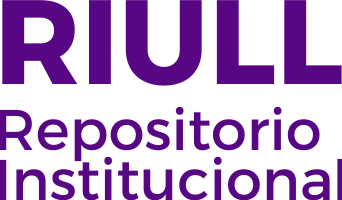Estudio del efecto del tratamiento térmico en las probetas de PLA3D870, fabricadas por impresión 3D mediante FDM.
Autor
Lugo Couros, SilviaFecha
2022Resumen
La fabricación aditiva (FA), o más comúnmente conocida como impresión 3D, es
un método de fabricación basado en la deposición de material capa por capa, lo que
permite la creación de piezas de formas muy variadas. Actualmente, es un método de
fabricación cada vez más común en múltiples sectores debido a la rapidez de creación de
prototipos, el ahorro de material y la precisión que implica. Es una técnica en pleno
proceso de crecimiento y presente actualmente en los sectores de la salud, la industria
aeroespacial, así como en el ámbito industrial, y con muchas futuras líneas de aplicación.
Dentro de las tecnologías de fabricación aditiva se encuentra el tipo denominado
Modelado por Deposición Fundida (FDM, por sus siglas en inglés Fused Deposition
Modeling), el cual consiste en la fabricación mediante extrusión y deposición de material
termoplástico fundido.
En el presente trabajo de final de grado se emplea el método de FDM para la
fabricación de probetas de ácido poliláctico (PLA), con el objetivo de analizar la
influencia del tiempo y la temperatura en la estructura interna del material y observar en
qué rango estas presentan algún grado de cristalinidad. Posteriormente, se fabrican
nuevamente probetas de PLA mediante FDM para ser sometidas al tratamiento térmico
óptimo, determinado con anterioridad, con la finalidad de ser ensayadas a tracción y,
finalmente, realizar un estudio de sus propiedades mecánicas. Additive manufacturing (AM), or more commonly known as 3D printing, is a
manufacturing method based on the deposition of material layer by layer, which allows
the creation of parts quickly and in a wide variety of shapes. It is currently an increasingly
common manufacturing method in many sectors due to the speed of prototyping, material
savings and the precision involved. It is a technique in full growth and is currently present
in the health and aerospace sectors, as well as in the industrial field and with multiple
future lines of application.
Among the additive manufacturing technologies is the type called Fused
Deposition Modelling (FDM), which consists of manufacturing by means of extrusion
and direct deposition of molten thermoplastic material.
In this final degree study, the FDM method is used for the manufacture of PLA
specimens, with the aim of analysing the influence of time and temperature on the internal
structure of the material and observing the range in which they present some degree of
crystallinity. Subsequently, PLA specimens are manufactured again by means of FDM to
be subjected to the optimal heat treatment, previously determined, to be tested in traction
and, finally, to carry out a study of their mechanical properties.





